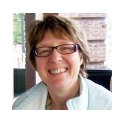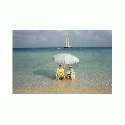Herma Buttner
Can you tell us about your studies? What scientific field do you currently work in?
I obtained my first degree in Munich (Germany) studying mineralogy/crystallography and my PhD in Heidelberg (Germany); the latter had an extraterrestrial touch because I studied trace elements in lunar samples using accelerator-based instrumentation.
At the ILL, I have concentrated my research mainly on the relation between the structure and dynamics of molecular crystals using neutron scattering. In a more collaborative role, I have worked closely with scientists in a number of other areas such as magnetism, and soft-condensed matter.
Tell us more about your neutron-scattering background?
My attraction to large-scale facilities continued with my move to the Institut Laue-Langevin (ILL) in Grenoble, France, probably still the Mecca of neutron scattering based on a reactor source. I started at the ILL as an instrument scientist and became a regular user of many neutron techniques such as time-of-flight, backscattering, diffraction, three-axis spectrometry, and small-angle scattering and I used different sample environments, including cryostats, furnaces, high-pressure equipment. My neutron-scattering experiments were carried out not only at the ILL, but also at other major centres such as: ISIS, UK; LLB Saclay, France; KEK Tsukuba, Japan; HMI Berlin, Germany; including sabbatical periods at LLB Saclay and ANSTO, Australia.
Can you tell step by step how you reached your current position?
After three years as instrument scientist at the ILL, I moved into scientific administration becoming responsible for the user program, dealing with about 1200 users per year and all the aspects of a proposal-review system for distributing beam time.
During a longish reactor shutdown, I helped the brand-new European Synchrotron Radiation Facility (ESRF), located next door, get their user programme established. Following my ESRF intermezzo, I became head of scientific support, including having responsibility for the joint ESRF-ILL library and briefly afterwards taking care of ILL’s public relations. This encouraged me to take on part-time study in ‘science communication’ and for two years I travelled between Birkbeck College at the University of London and Lyon airport in addition to my job.
In 2000, after 15 years in France I moved from living at a 900 metre altitude to two metres below sea level in the Netherlands. My travelling increased because my job was to set up a university alliance of major European technical universities: the IDEA League, an alliance consisting of Imperial College London, TU Delft, ETH Zürich and RWTH Aachen, which ParisTech (Grandes Ecoles de Paris) joined in 2006. As Secretary General of this university consortium, I managed the various activities of the alliance (more than 20 working groups) initiating new activities and making the alliance known in the European landscape.
My move to Australia in October 2006 brought me a few metres higher – I live now at sea level – but on the other side of the planet. At the Australian Nuclear Science and Technology Organisation (ANSTO) I was in charge of the Bragg Institute’s User Office – Scientific Coordinator, similar to my position at the ILL. In April 2009, I moved into the position of Senior Adviser Research Management and Science Policy reporting directly to ANSTO’s chief executive officer.
Have you got publications?
My own research and my collaborative research led to publications in refereed journals. In addition, I have also organised workshops and conferences and subsequently became co-editor of proceedings. I also edited a number of annual reports, newsletters, etc.
- 83 refereed publications
- Editor of annual reports, newsletters and many web pages
- Co-editor of several workshop proceedings
- Editor of Neutron News
Have you experienced any difficulties because of your gender?
Not really, but I must admit that I use my PhD title consciously. When I started in the ILL scientific coordination office I had a few odd experiences when I was taken as my own secretary. I found that the use of ‘Dr’ in front of your name can be quite useful in order to avoid confusion especially when you have official titles such as ‘scientific secretary’ or ‘secretary general’.
I felt it disadvantageous that I had a name change in the middle of my career (divorce and remarriage), because I lost evidence in my publication output. Fortunately, legislation has changed (in Germany) and it is now much easier to keep your name.
What percentage of your time do you dedicate to your family/ work/ for you?
Since I have no children, my work/free time was often out of balance, especially at the ILL. When I started with the IDEA League I made a conscious decision about having more time for me. Although I was travelling a lot in this position it gave me time for myself. Over years, I learnt to do more long-time planning, eg holidays, concert/theatre subscription. If an event is earmarked in my (and my husband’s) calendar I will try to work round it or cancel certain requests.
Who or what is your mentor or greatest inspiration?
The author and philosopher Simone de Beauvoir was a great inspiration in my formative years. The political changes in the years after 1968 were initiated by philosophical themes such as existentialism and through Simone de Beauvoir’s books feminism issues came into the system. It taught me that you have to do things in a way that you can live with yourself, especially when you work in a male-dominated working environment such as science.
I would also like to acknowledge a few mentors, although at the time I did not realise that’s what they were:
- Werner Press provided advice, especially in my first steps as ‘local contact’; he was senior scientist at the ILL when I started as instrument scientist; we kept contact via students.
- Alan Leadbetter was great to work with because of his stimulating and encouraging attitude; as scientific director he was my boss the last years before I left the ILL.
- Don Kearley taught me about time-of-flight technique and we worked together on many experiments; I always appreciated his advice in dealings with people. There seems to be a synergy in our relationship – we are still married.
What is the most challenging thing you have faced in your career?
My move to the Netherlands was probably my biggest challenge, because essentially I had to start from scratch without any reputation or recognition after leaving a rather successful position and being known in the ‘neutron world’. Not only did I have to learn yet another language, but I also had to familiarise myself with higher-education systems in different European countries in order to run the university alliance IDEA League.
Contact details
Dr Herma Büttner
Senior Adviser Research Management and Science Policy
Australian Nuclear Science and Technology Organisation (ANSTO)
Office of the Chief Executive Officer
PMB 1 Menai
NSW 2234
Australia
T + 61 2 9717 3535
F +61 2 9717 6111
E herma.buttner@ansto.gov.au



 Back to previous page
Back to previous page
